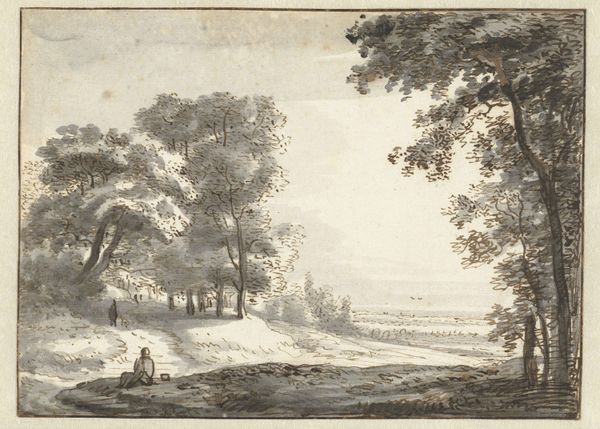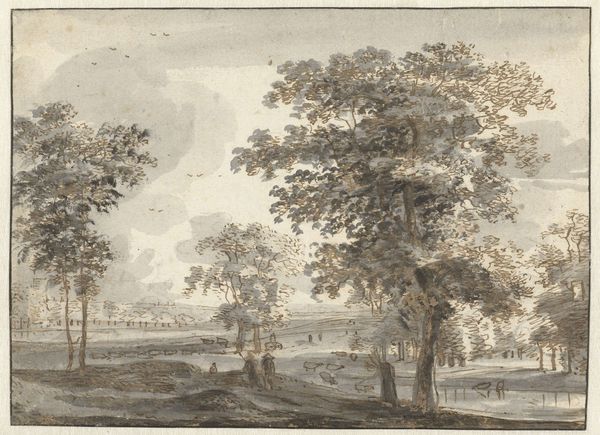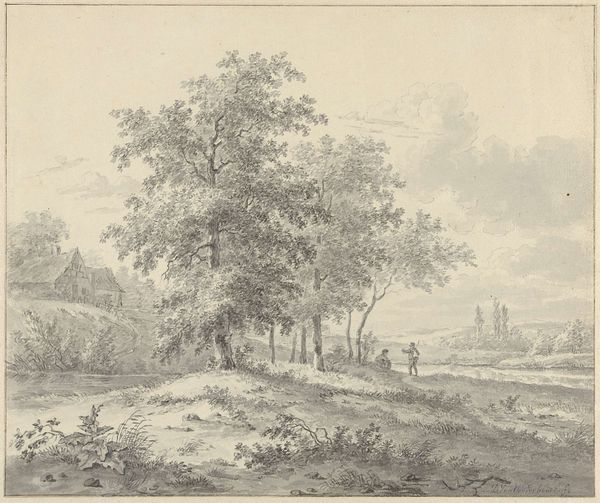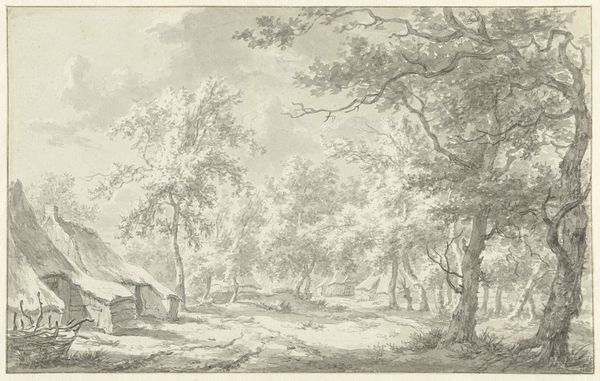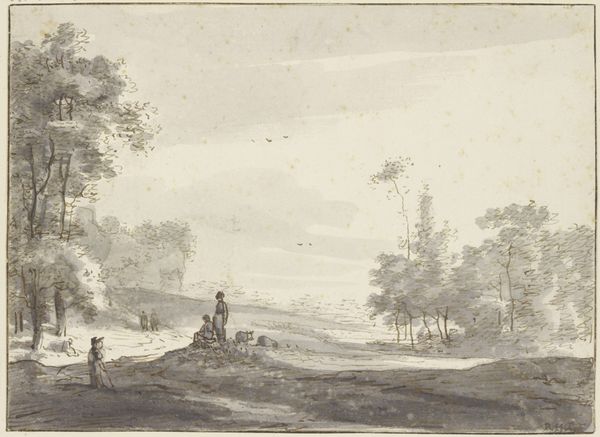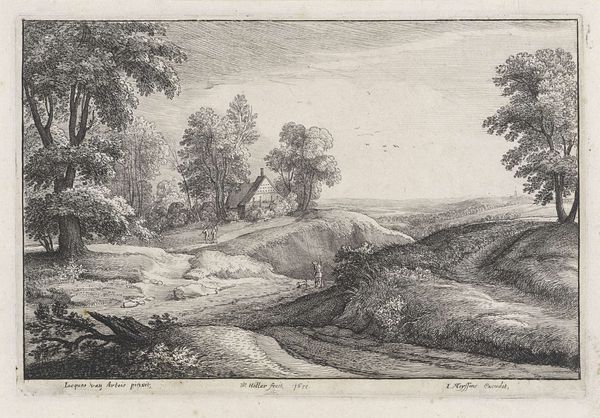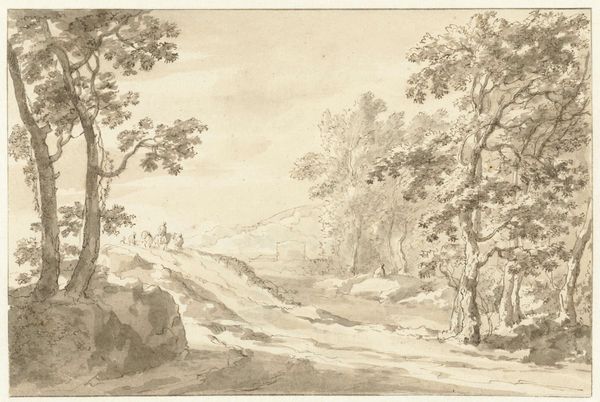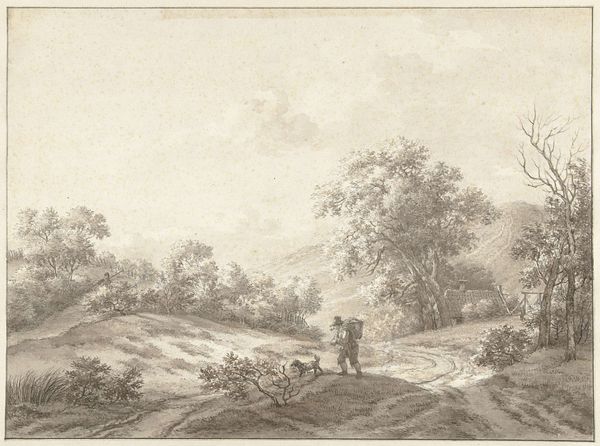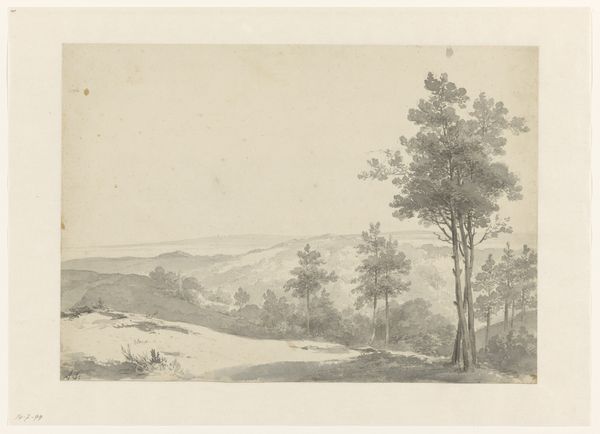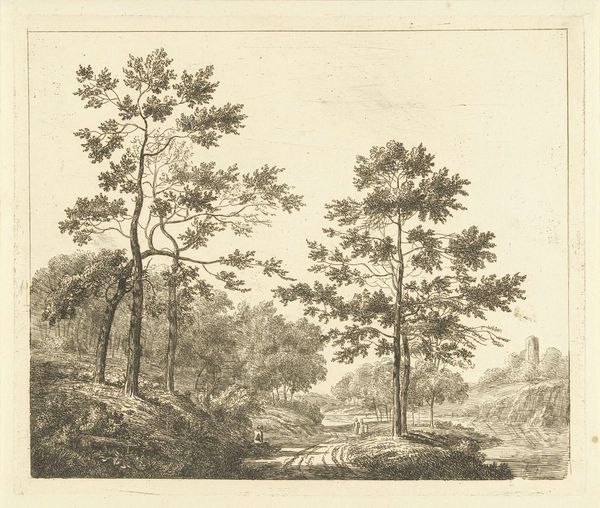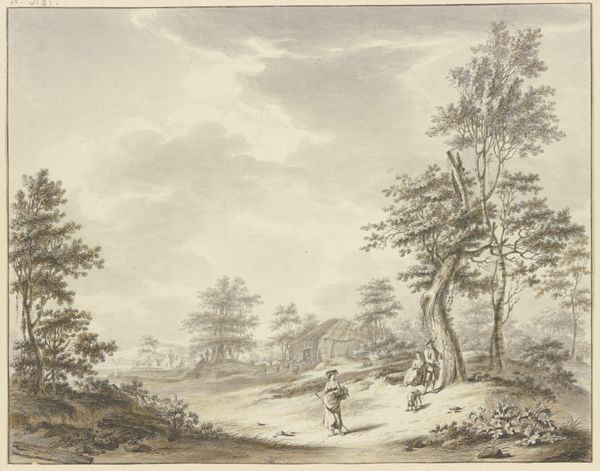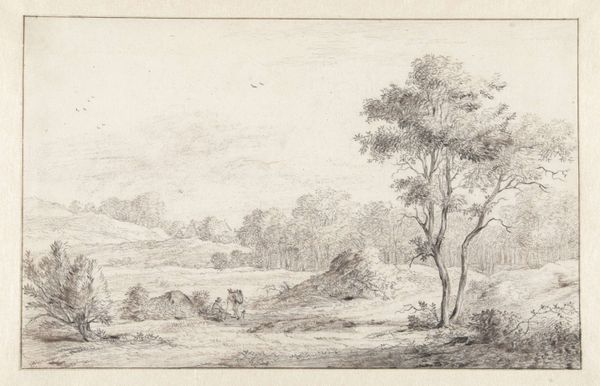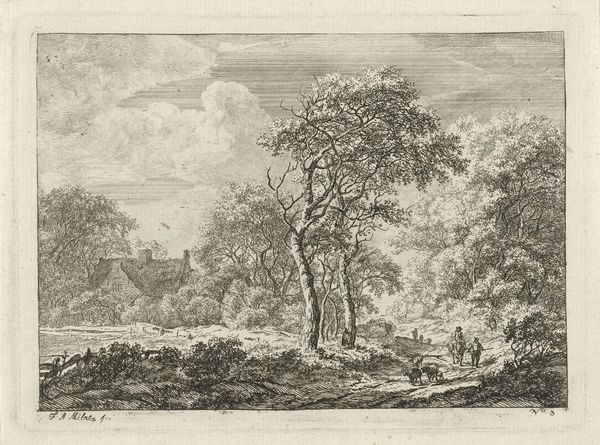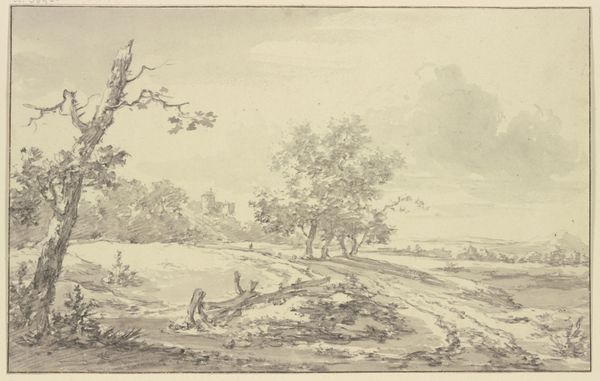
drawing, paper, ink, pencil
#
drawing
#
dutch-golden-age
#
pencil sketch
#
landscape
#
paper
#
ink
#
coloured pencil
#
pencil
#
genre-painting
#
watercolor
Dimensions: height 130 mm, width 178 mm
Copyright: Rijks Museum: Open Domain
Curator: Looking at this ink and pencil drawing, “Wooded Landscape with a Traveller on a Path," we can see Roelant Roghman's keen eye for the subtle textures of nature, created sometime between 1657 and 1670. The piece currently resides at the Rijksmuseum. What springs to mind for you when you first see it? Editor: The monochrome gives it this lovely, quiet intensity. It’s less about the grand statement, and more about capturing a fleeting, observant moment—almost melancholic, really. You can practically smell the damp earth. Curator: Exactly. And what is striking is Roghman's dedication to representing the Dutch landscape, without any sense of overt romanticism or moralism so common in the period. It's landscape as lived, ordinary space. Notice how the composition directs our eye to the lone traveler; seemingly dwarfed by the looming trees. Editor: Yes! That's what immediately hit me, this contrast! Look at the actual labour implied by the making—the deliberate choice of cheaper paper, the detailed hatching... Drawing wasn't exactly considered high art in the Dutch Golden Age. But what can be easily lost, is that paper itself had to be pulped and laid, pencils shaped and sharpened! Someone, likely more than one person, was making this art possible behind the scenes, if you will. Curator: You're absolutely right to point that out. There is definitely labor visible in this artwork that transcends just Roghman’s contribution to it. We see landscape art and miss that materiality aspect to it as a kind of luxury product dependent on its modes of production. How then, do we even begin to gauge the 'cost' of this artwork in the context of its original production? Editor: We have to understand these seemingly humble sketches as complicit with material culture more generally—landscape is only rendered 'romantic' once certain economies make it possible, right? Curator: A compelling perspective. Considering Roghman's meticulous layering, it makes us wonder what other ways labor has been poured into this piece of art... Editor: Indeed. Roghman presents an environment but with implications we might often prefer not to consider as integral.
Comments
No comments
Be the first to comment and join the conversation on the ultimate creative platform.
